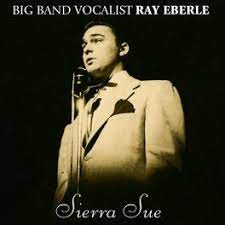
Daily Dose Of Jazz…
Raymond Eberle was born on January 19, 1919 in Mechanicville, Saratoga County, New York. He started singing in his teens without formal training. In 1938 while looking for a male vocalist for his big band asked Bob Eberly if he had any siblings at home who could sing and his brother was hired on the spot.
Eberle went on to find success with Miller, deeming the songs for the film Orchestra Wives, such as the jazz standard “At Last”, to be among his favorites, as they were songs he could make a story out of. During the Forties he appeared in Twentieth Century Fox movies, and several Universal Studios films, singing mostly ballads.
He led his own orchestra, The Ray Eberle Orchestra, as well as the Serenade In Blue Orchestra from 1943. In the 1950s and 1960s.he also appeared on numerous television variety shows. He maintained his band until his death.
After his departure from Miller, Eberle briefly joined Gene Krupa’s band before launching a solo career. He later joined former Miller bandmate Tex Beneke’s orchestra in 1970 for a national tour, and reformed his own orchestra later in the decade.
Vocalist Ray Eberle died of a heart attack in Douglasville, Georgia on August 25, 1979, aged 60.
More Posts: history,instrumental,jazz,music,vocal
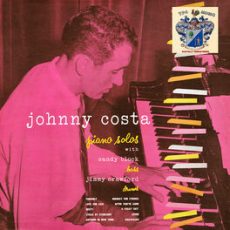
Daily Dose Of Jazz…
Sandy Block was born on January 16, 1917 in Cleveland, Ohio. Growing up in Cleveland and Brooklyn, New York he played violin as a child. He picked up the bass in high school and worked professionally in big bands from the late 1930s.
Block worked with Van Alexander, Chick Webb, Alvino Rey, and Tommy Dorsey. He recorded with Louis Armstrong and Ella Fitzgerald. He played with Charlie Parker on the only television appearance Parker ever made.
After the 1950s Sandy worked extensively as a studio musician, including with folk ensembles such as The Greenbriar Boys. He played with Jimmy McPartland and Johnny Costa, but went into semi-retirement after the 1960s.
Bassist Sandy Block, who was also credited as Sid Block, died on October 1, 1985.
More Posts: bass,history,instrumental,jazz,music
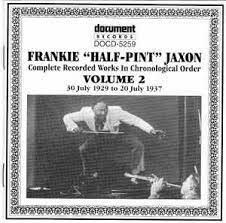
Daily Dose Of Jazz…
David A. Young was born January 14, 1912 in Nashville, Tennessee but was raised in Chicago, Illinois. There he joined a band made up of newsboys from the Chicago Defender.
In the 1930s he worked in the bands of Frankie Half Pint Jaxon, Fletcher Henderson, Carroll Dickerson, and Roy Eldridge. He was with Horace Henderson in 1939-1940.
During World War II worked with Walter Fuller, Lucky Millinder, and Sammy Price. He was drafted into the U.S. Navy in 1944 and played in a military band until the end of the war. After his discharge Dave returned to Chicago and played with Dinah Washington.
The 1950s had Young leaving his career in music and returning to working for the Chicago Defender, this time as an advertising executive.
Tenor saxophonist Dave Young died on December 25, 1992.
More Posts: history,instrumental,jazz,music,saxophone
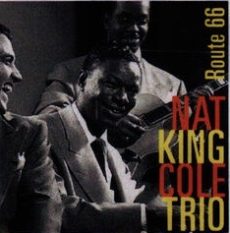
Daily Dose Of Jazz…
Charles Pervis Harris was born in Alexandria, Virginia and raised in Baltimore, Maryland on January 9, 1916. He studied violin before switching to bass in high school. He played professional dates while studying education at what is now Coppin State College. He went on to work at the Royal Theater in Baltimore after graduating.
Joining Lionel Hampton in 1941, he played with him for several years and was one of three bassists in Hampton’s ensemble, one of his bandmates being Charles Mingus. Harris did some recording with Dizzy Gillespie in the 1940s as well. Fatigued from touring he returned to Baltimore in 1949.
Soon after he worked in a band called Three Strikes and a Miss, again at the Royal Theater. While working there Nat King Cole heard him and asked him to join his trio. During his tenure with the vocalist, Charlie performed on some of Cole’s best-known tunes, such as Unforgettable, Route 66, It’s Only A Paper Moon, Sweet Lorraine and Mona Lisa. During the 1956-57 season he performed on Nat’s tv show on NBC.
After leaving the band he returned to Baltimore and remained there, playing, teaching, and working as a furniture salesman. Double bassist Charlie Harris died from cancer on September 9, 2003 at Bon Secours Hospital.
More Posts: bass,history,instrumental,jazz,music
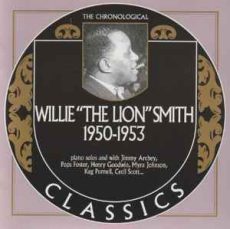
Daily Dose Of Jazz…
William “Keg” Purnell was born on January 7, 1915 in Charleston, West Virginia. He studied at West Virginia State College from 1932 to 1934, and played with the Campus Revellers while there. He toured for a year with King Oliver in 1934, then freelanced with his own trio in the late 1930s. In 1939, he worked with Thelonious Monk.
By the end of the decade and into the 1940s Keg was playing in the bands of Benny Carter, Claude Hopkins, and Eddie Heywood. He also recorded with Rex Stewart, Teddy Wilson, and Willie “The Lion” Smith. Late in his career he played with Snub Mosley in 1957 and subsequently on.
Drummer Keg Purnell, whose influences included Chick Webb and Big Sid Catlett died on June 25, 1965 at the age of 50.
More Posts: drums,history,instrumental,jazz,music


